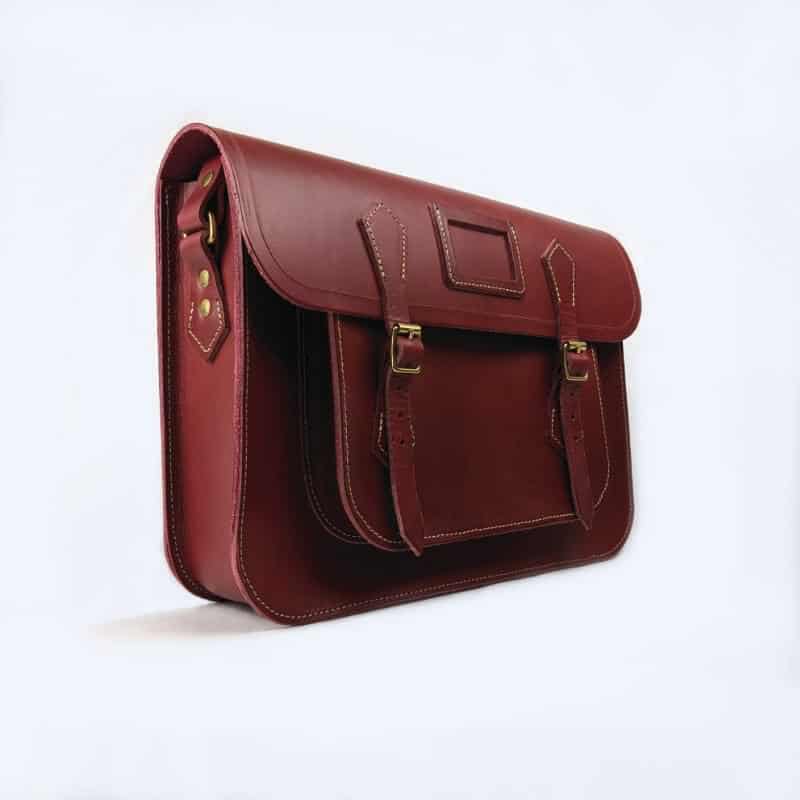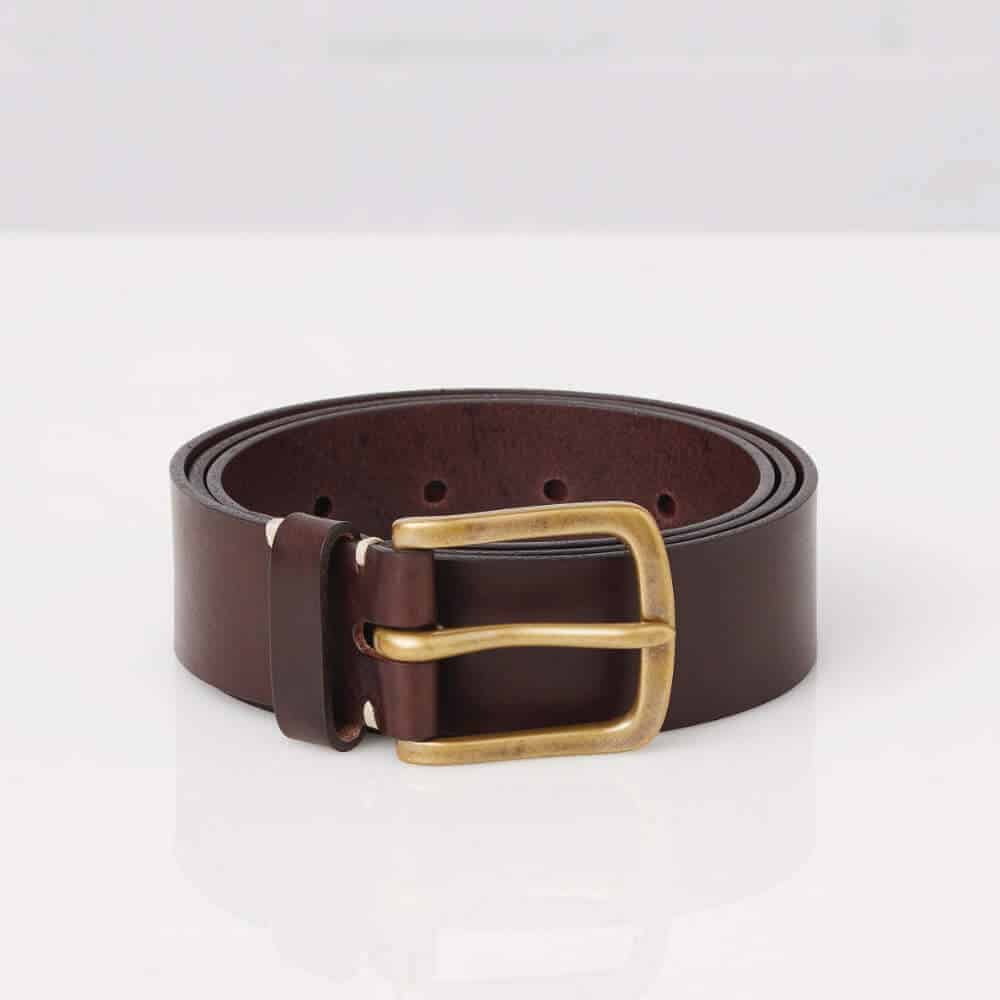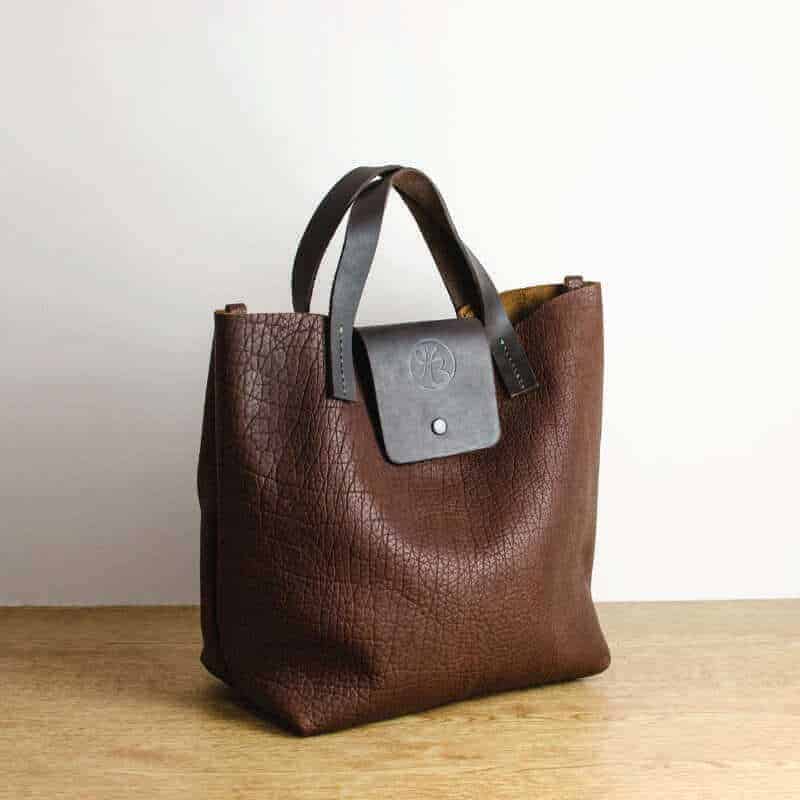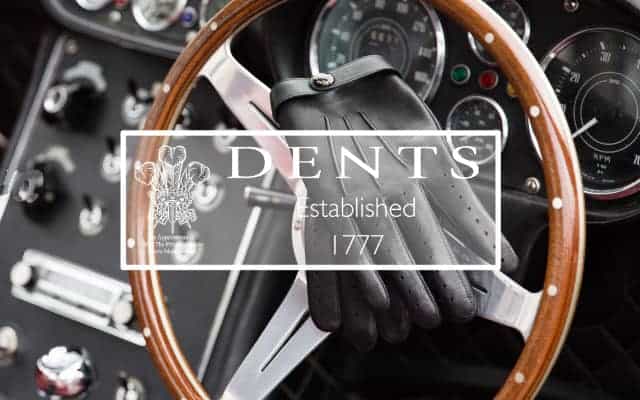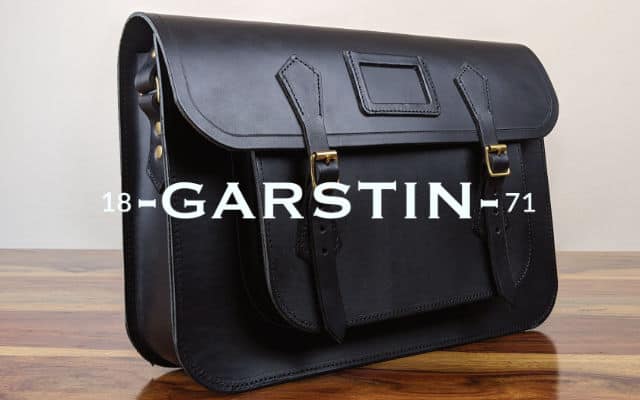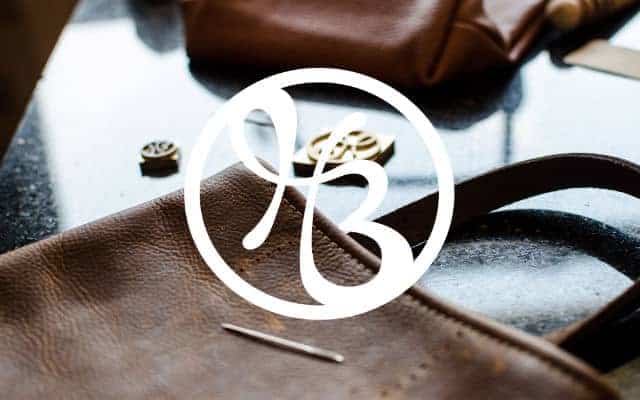British LEATHER
A Brief History of Leather & Britain

Leather has been with mankind for as long as we have been able to walk upright. The history of leather is as old as time. After a full stomach mankind required clothing. Adam ate the apple and in Genesis it says ‘Unto Adam and to his wife did the lord make coats of skin and clothed them’. Either this was God realising that all of their internal organs were falling out and needed to put a layer of skin around them both or God was the first leather craftsomnibeing.
Before we delve into the world of leather and the history of leather in Britain we should take a whistle stop history tour of the evolution of what is one of the most defining ‘inventions’ of man.
It starts right at the beginning, when the first hominids roamed and hunted the plains of East Africa we can assume the hides of their prey were not wasted. As it is now, most of the leather we use is a by-product of the meat industry. And no doubt the rudimentary tools they used for cleaving meat were also utilised for creating basic leather garments.
It was probably the Neanderthals who fashioned instruments delicate enough to sew to create more fitting leather garments. And boy did they need them roaming the cold tundra of Northern Europe hunting Mammoth. But it isn’t until around 7000BC that the first leather sandals appear. Archaeologists and the National Geographic think this is true due to fossils found of weakened small toe bones, suggesting sandal wearing.
Around 5000BC leather working was in full swing in North Sudan and South Egypt as coloured leather artefacts were found in Nubian Tombs. But it wasn't until around 5500 years ago that what we would call a shoe developed. The first shoe with the toes covered was discovered in Armenia, it had leather laces and is made from a single piece of cowhide. It has been sized as a women’s UK size 5 and is the first known instance of the tanning process.
Ötiz the Iceman
Probably the most famous leather clad chap was Ötiz the Iceman, found on the Alpine border between Austria and Italy and thought to be 5300 years old. His coat made of deerskin, was tanned with smoke then greased, dried and softened with a smooth stone, stick or (and this would have taken a while for a whole coat) chewed. Whilst his shoes were made from brown bear skin with bark string allowing them to be tightened. Craft skills were not only used creating his clothing but he was also covered in 50 tattoos, where his skin was scratched and charcoal rubbed into the wounds.
Although we know that tanning has been around eons, used to turn hide into leather that is supple, durable and doesn’t degrade. The first documented process was discovered in the tomb of Rekhmire. A scene on a tablet depicts skins being ‘fleshed’ in large jars containing an unknown liquid. Then softened by being pulled over a simple instrument. A technique that is still used to create some of the world’s finest leather. The history of leather is not always a lovely place.
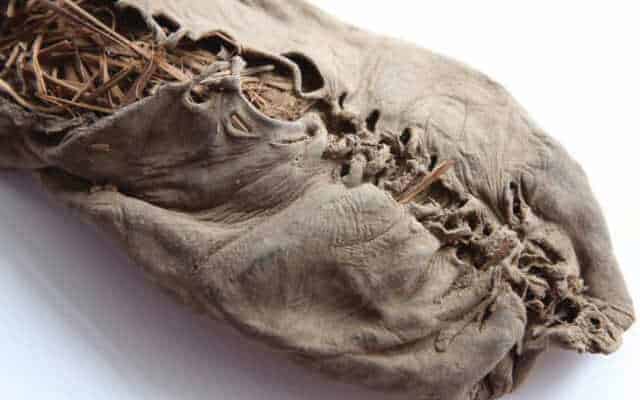
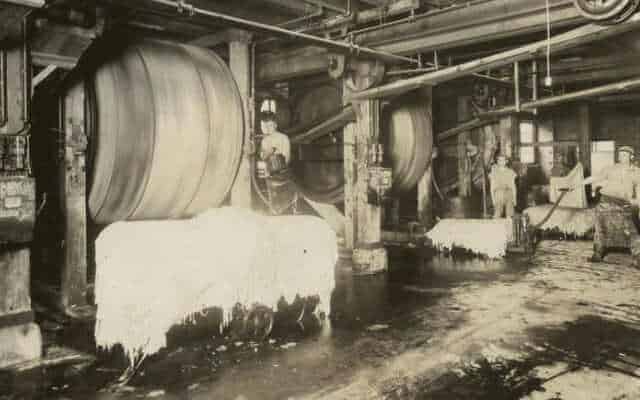
What is ‘Tanning’?
A little about tanning wouldn’t go amiss here as we know that word but many do not know how it actually happens. So, tanning is the process which leather goes through to make it more pliable and to change the protein structure of the skin making it more durable and less susceptible to decomposition. Not quite what happens when sun worshippers spend a little too long catching rays.
There are five steps in the tanning process and three types of tanning. Without getting too technical they are;
1: Pre-Tanning, which includes Soaking – to extrude salts. Liming – to remove hair, epidermis and to soften. Splitting – to separate the grades of leather such as top grain and suede.
2: Tanning, which is the actual process of turning hide in leather. There are three types of tanning. 1: Oil Chamonising. 2: Mineral (alum) tanning. 3: Vegetable tanning.
3: Selecting, which is pretty self-explanatory.
4: Dressing, which includes many processes they being; shaving, dyeing, re-tanning, setting, drying and trimming.
5: Finishing, which as the name suggests is creating the finished look of the final leather.
Leather Tanning Recipes
800BC is the first known written down recipe of tanning. It is a mighty fine recipe indeed and proves how important good quality leather was and in fact still is. ‘This skin you will take it, then you will drench it in pure Nisaba flour, in water, beer and first quality wine. With the best fat of Ox, the alum of the land of the Hittites and oak galls, you will press it and cover the bronze kettle drum with it’
It took a while for these techniques to appear in Europe. And only appeared in mainland Europe around the 8th Century when the Moors arrived on the Iberian Peninsula. But it wasn’t until the 11th Century when all three tanning processes spread the width and breadth of Europe. And this is where we can start our journey of leather in Britain.
Obviously, leather had been used and manipulated across the British Isles for centuries. In 2000BC during the Bronze Age, leather works were in operation in Southern Scotland. And no doubt the Romans that landed brought leather techniques and craftsmen with them. Napoleon claimed an army marches on its stomach but the Roman Legions surely marched on their sandals too.
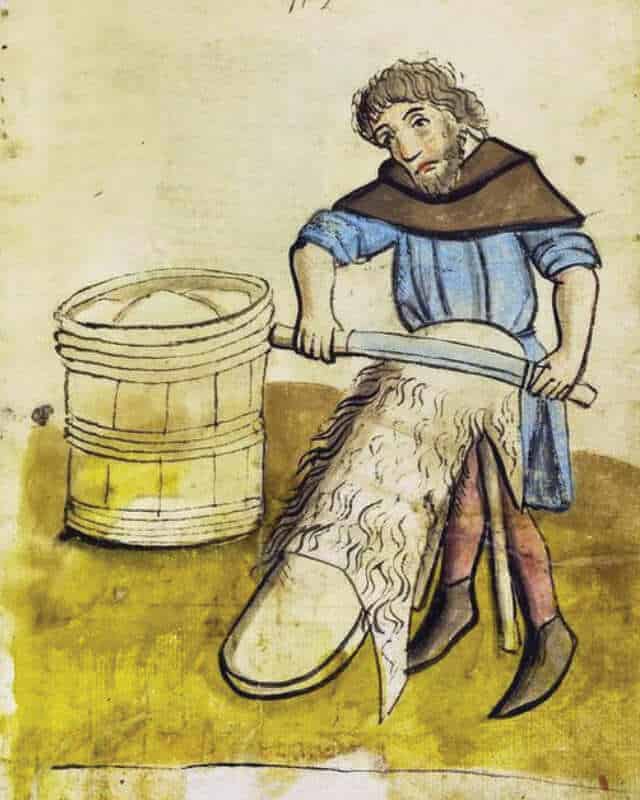
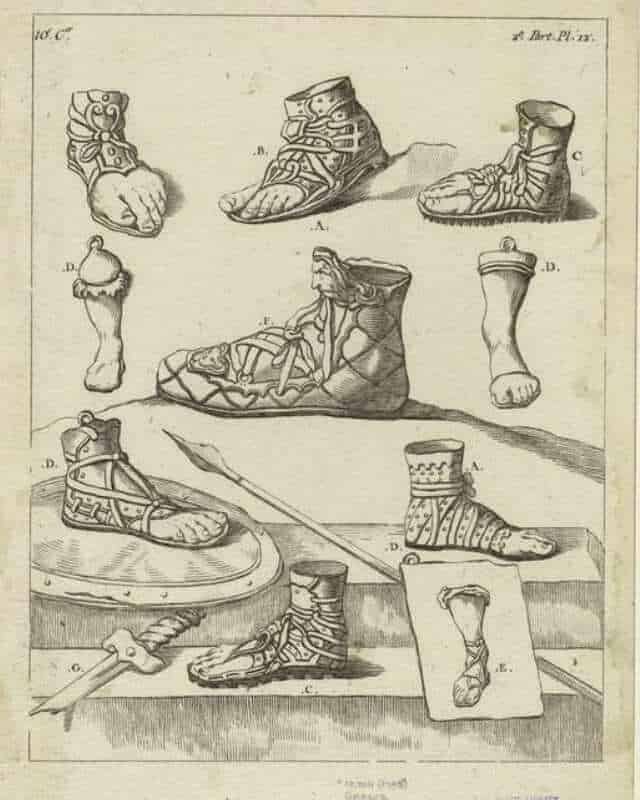
The Worshipful Livery Companies
1272 was the year that British leather became legit. Before this time there were of course spread across the land, cordwainers, glovers, saddlers and leatherworkers creating leather goods for their local communities. But in 1272 The Cordwainer Company of London began making shoes from Cordoba goatskin. And The Saddler Company of London received its first charter from Edward I. Although it is believed that the Guild of Saddlers began in 1160 but there seems to be the lack of paperwork to substantiate this.
The next few decades saw the foundation of many of the Worshipful Livery Companies. This included in 1300 the Curriers Company of London, which received its first Ordinances or authoritative order which dealt with price and quality. Currier, if you were wondering, is the ancient name for those that deal with the tanning process; dressing, finishing and all manner of other things to do with tanning.
In 1327 Edward III granted a charter to the Skinner Company which formed from two separate religious sects and the reason why most livery companies are called, in their long form ‘The Worshipful Company of…’ During the reign of Henry II Skinners were also known as Pelliparii or Peletors, those that are skilled at dressing skins. The early skinners didn’t own the skins they dressed, they simply dressed them for wealthy traders who owned shops where the finished leather was sold. Their history still lives all around us, in places such as Skinners’ Row in Lincoln and Skinners’ Hall in London. The Skinners’ though became a powerful collective and became one of the Twelve Great Livery Companies of London. Their alumni members included Royalty Edward III and Richard III to name just a couple.
Being one of the Great Livery Companies they were ordered by James I in 1610 to undertake settlement of Ulster. Each Great Livery Company was told they must pick lots and Skinners’ drew lot 12. Its land in Northern Ireland became known as Manor of Pellipar. After a formal conveyance and the Royal Charter granted it created the city and county of Londonderry in 1613 and were bequeathed all profits arising from it forever. Forever is a long time and they finally sold the lands back to Ireland in 1913.
If you are interested, the other eleven Great Worshipful companies are in no particular order; Mercers, Grocers, Drapers, Fishmongers, Goldsmiths, Merchant Taylors, Haberdashers, Salters, Ironmongers, Vintners and Clothworkers.

Glove Makers
In 1349 the Worshipful Company of Glovers formed to uphold the high standards of glove making. They created rules such as fixing the price of sheepskin gloves to ‘a penny a pair’. And ordained that gloves should not be sold by candlelight as ‘folk could not tell whether of good or bad leather or lawfully or falsely made’. Another document which we particularly love proclaimed that ‘naughtie or decietfulle’ gloves could and would be destroyed by order of the wardens.
They amalgamated with the Purser Company in 1501 and a year later were taken over by the more powerful Leathersellers Company, who were formed in 1372 when a group of leather sellers complained to the Mayor that the dastardly Dyers had been dying sheep’s leather to pass it off as the more expensive Roe leather. And by 1444 were very organised and powerful and petitioned Henry VI for a Royal Charter of incorporation, which was duly granted.
However, the amalgamation of the Leathersellers, the Pursers and the Glovers didn’t last due to the 17th century fashion revolution of glove wearing during the reign of Elizabeth I. Gloves were the fashion accessory which in turn gave the Glovers Company more and more power and in 1638 King Charles granted them their own Royal Charter. To say that they were a forward-thinking company is an understatement. Once the charter was granted they, and this was unheard of at the time, allowed women to become full members. And even had female apprenticeships.
However, the coming of the industrial revolution wasn’t kind to the Glovers who wanted to uphold the craftsmanship of glove making. The artisan workshops of the city of London dwindled as ‘factories’ sprang up across Britain. During the first half of the 18th Century there were 120 Glovers, but by the end only 12 were left. But it wasn’t all doom and gloom as a craft industry. It was retracting but these ‘factories’ were creating a behemoth of an industry and no area made as many gloves as Worcester. During the period of 1790 -1820 there were believed to be 150 manufacturers that employed 30,000 workers.
Nearly half of all gloves made in Britain came from Worcester and the surrounding areas. With Dents, formed in Worcester in 1777, a brand we proudly stock, one of them. The sad demise of Worcester as a glove capital when the foreign import tax was introduced in 1826 and cheap foreign imports flooded the market. The last surviving glovemaker in Worcester, Alwyn Gloves closed its doors in 2015.
Shakespeare and Glovess
Not far from this epicentre of glove making is Stratford-Upon-Avon where a one John Shakespeare lived and worked. It is a little-known fact that the father of William Shakespeare was in fact a ‘whittaner’ (a tanner who utilises alum tannage) of kid, deer and dogskin. If you go on the tourist trail you will find in Shakespeare’s house a room dedicated to his father’s work. It is thought that William helped his father out and probably why there are so many references to gloves in his work, that and their symbol of status during the period.
Leather was becoming a serious business, whichever side of the business fence you were on. All of the different parts of the process were protected. One part of the business couldn’t just simply do or engage in another part, sort of union rules. In 1563 the Leather Act passed through Parliament. Which stipulated that leather intended for the outer soles should be tanned for at least a year and other shoe leather for at least 9 months. But the big hoo-ha was in the Act was it also forbade Curriers from buying leather. The law stated that Leathersellers should sell to the Tanner, who would sell to the shoemakers or cordwainer and they shall take it to the Currier for processing. The Shoemakers first obtained support for this act in 1548 but it took 15 years for it to pass and be settled.
Northamptonshire Shoemaking
Even more dramatic than the glove making industry of Worcester, is the rise of Northampton and Northamptonshire in the shoemaking business. Northampton had a few cordwainers around the 15th Century. But due to the area being good cattle ground and having a large cattle market, when a group of shoemakers from the area won a government contract in 1642 to supply the army, a chain reaction was set off in the town. By 1841 there were incredibly almost 2000 shoemakers in Northamptonshire. And unlike Worcester, Northampton can still claim to be one of the shoemaking capitals of the world, particularly luxury shoes.
When the great plague of 1664 hit British shores, a sort of QAnon theory spread throughout the land. And that was, that the oft foul stench of a tannery would protect you. It is not sure how this theory spread but spread it did just like the plague. Londoners rushed to Bermondsey where there stood vast tanneries. These tanneries were situated there due to the easy access of water (the river Thames), cows for the hides (Bermondsey was country side back then) and Oak (again Bermondsey was countryside). And took in the ‘good’ air that would protect them. It wasn’t just in London that this happened.
In Nottingham wealthier folk began moving into Narrow Marsh as it contained at least 47 distinct tanneries. The foul stench obviously didn’t protect the wealthier of society and they soon moved back out again if they hadn’t died from the plague. After this Narrow Marsh became a slum of the most terrible kind, where police officers would only go in pairs.
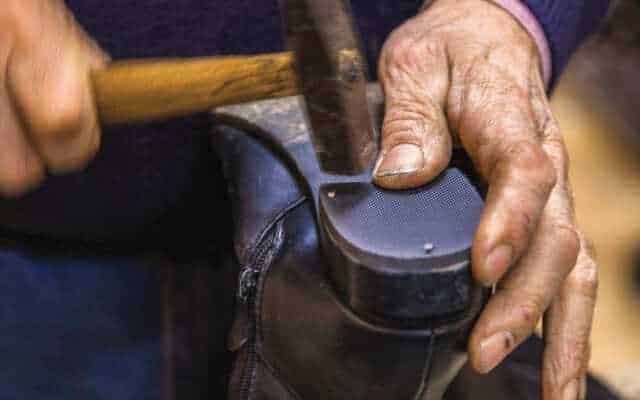
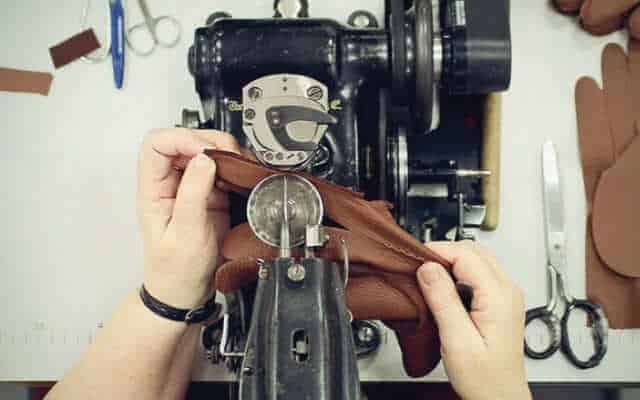
British Leather, a Global Player.
British craftsmanship skills in tanning and leatherworks were in demand. And was exported throughout the world. In 1630 Frances Ingall from Lincolnshire set sail for the new world and landed in USA. There he found the first US tannery near Boston. Sir William Johnson took over 60 tanners and glovemakers to the newly named Gloversville area of New York from Perth in Scotland. And British companies were exporting their superior leather goods by the millions around the world.
One such industry was Saddlers and Harness Makers. In 1801 there were around 29 saddlers in the Walsall area of the West Midlands but by 1881 there were 3492 Saddlers and 430 Tanners and Curriers. It was so ingrained in the local economy that a local Walsall Tanner named E.T Holden was elected as MP. At present there are still around 95 leather companies plying their trade in the Walsall area of which 65 are Saddlers, still the highest concentration of Saddlers in the world. And why Walsall Town FC are nicknamed The Saddlers.
British Tanneries
Although there are only around 23 tanneries left in the UK they are generally superior quality tanneries that create some of the world’s finest leather. But although most of the large tanneries have now closed or have relocated to places such as Ethiopia. And many of the mass manufactured leather works have also moved to countries with cheaper labour forces. But high end leather and artisan leather is still very much alive in Britain.
When it comes to the history of leather, Henry Belasge listed leather in 1657 among the ‘chieffe riches’ of England, only second to wool in importance. It may not rank that high in GDP importance any longer but Britain is still one of the great leather nations. Creating not only some of the finest leather but also some of the finest leather goods. Using craftsmanship skills that have been passed down through generations.
It is a craft that creates objects such as gloves, belts and bags that when held or used feel just right and only gets better over time.
Below you will find a selection of brands we are proud to purvey and upheld the skills and ethics that the Worshipful Livery companies believed in; honesty, craft and integrity. Simply click on them to be taken to their page where you can purchase leather goods that will last you a lifetime.

